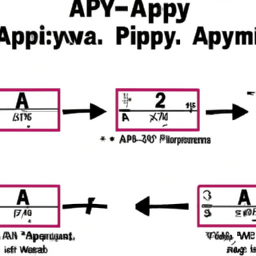If you’re looking to grow your savings and you’re wondering how much your money could be worth after a certain amount of time, it’s important to understand Annual Percentage Yield (APY). APY is the total interest earned on an account, divided by the principal amount and expressed as a percentage. Knowing how to calculate APY can help you estimate the total amount of interest you could earn, and in turn, inform your decision-making when choosing where to invest your money.
To calculate APY, you would first divide your interest earned by the principal amount. For example, if you have $1,000 in a savings account and you earned $30 in interest in a year, you would divide $30 by $1,000 to get 0.030. Then, add 1 to this number, giving you a total of 1.030.
Next, you would divide 1 by the number of times your interest compounds in a year. For example, if you have a savings account that compounds interest monthly, you would divide 1 by 12, giving you 0.083.
Finally, you would take 1.030 and raise it to the power of 0.083. This will give you the calculation for APY. For example, if you had a savings account that earned $30 in interest in a year on a $1,000 principal with a monthly compounding frequency, the APY would be 1.030^0.083, which equals 1.0317, or 3.17%.
If you don’t want to run the math yourself and you’re looking for an easier way to calculate APY, you can use an online compound interest calculator. This can save you time and help you make more informed decisions about where you want to invest your money.
Today, the best savings accounts earn more than 3% APY and a few of the top accounts pay close to 4%. Check out the Ultimate Rate-Chaser Calculator to see how much extra you could be earning with the current offers of 4% APY on up to $6,000 total ($2,000 each on three accounts).
It’s important to note that APY is not the same as interest rate. interest rate is the rate paid on the principal amount and is usually expressed as a percentage. APY or Annual Percentage Yield takes into account the effect of compounding interest. This means that APY is the total amount of interest that would be earned if the interest compounds for a year.
When choosing a savings account, you should pay attention to both the interest rate and the APY, as this will give you a better idea of how much your money could potentially earn over time.
Understanding how to calculate APY can give you a better understanding of how much your money could be worth in the future. Knowing how to calculate APY can help you make more informed decisions when it comes to invest your money and choosing a savings account.
